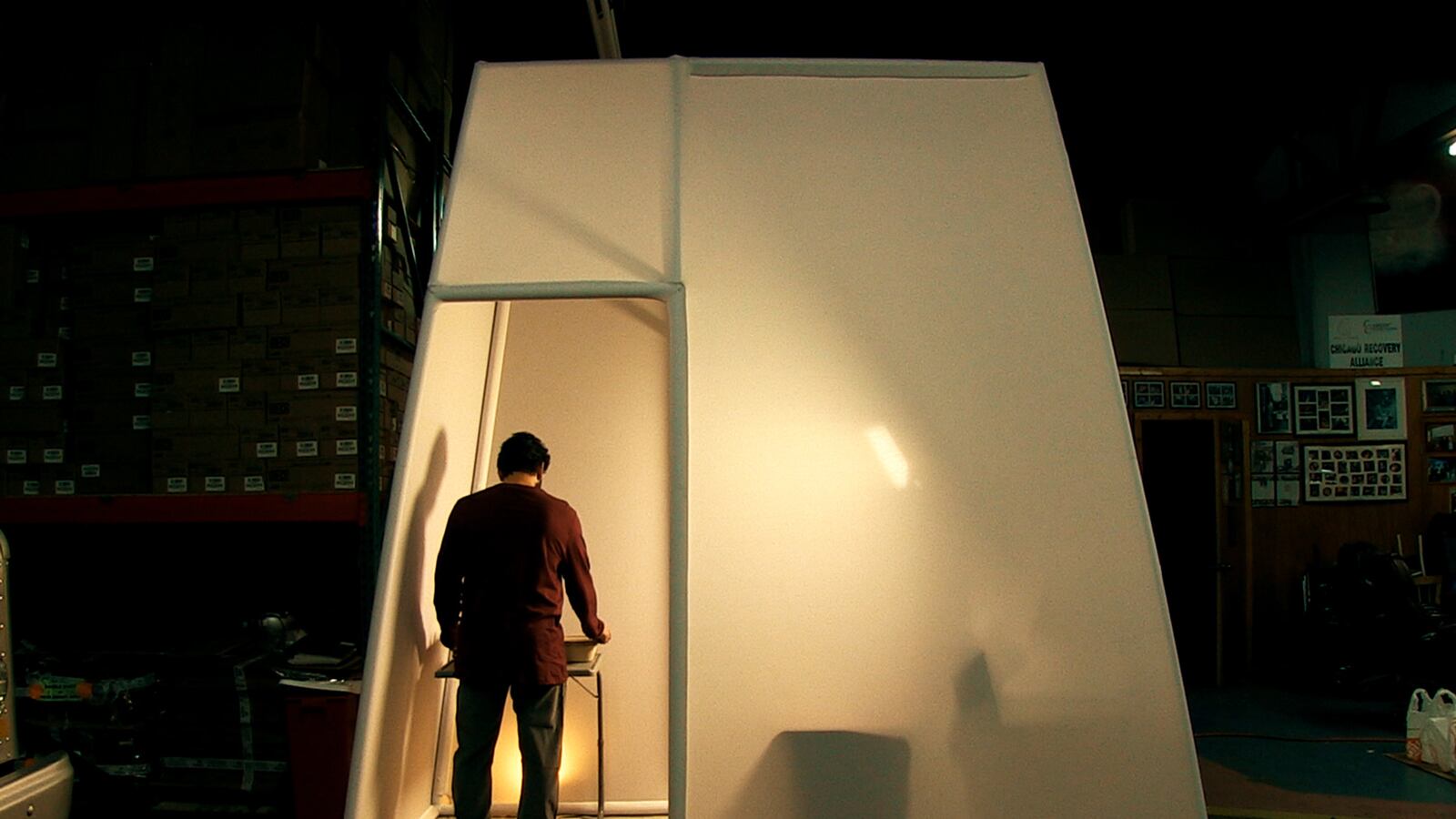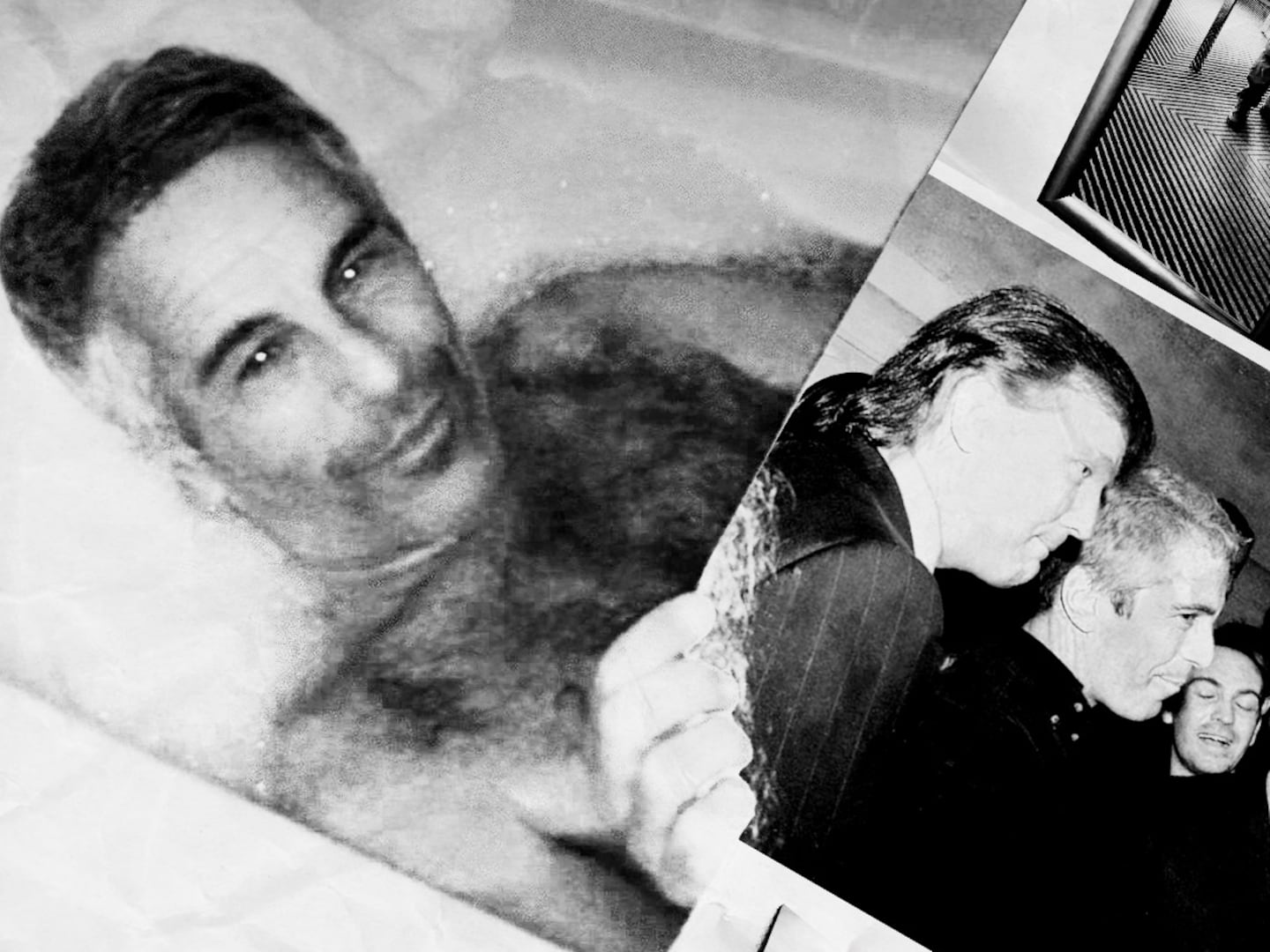In 60 cities across eight countries worldwide, injection drug users can safely get their fix under medical supervision. The United States is not one of those countries.
These spaces are called supervised injection facilities (SIFs) and there are over 100 of them in operation worldwide. Research demonstrates that SIFs save lives. A 2011 paper published in The Lancet found fatal overdoses within 500 meters of Insite, a SIF located in Vancouver, decreased by 35 percent after the facility opened. The city of Vancouver as a whole saw a nine percent reduction in fatal overdoses during the same time period.
Despite evidence that SIFs reduce HIV infections and overdose deaths, America shutters at the notion of government taking a back seat to people doing drugs. Meanwhile, heroin-related fatalities in America continue to skyrocket, quadrupling between 2000 and 2013.
Which is why sociologist Greg Scott partnered up with architect-designer Andrew Santa Lucia, to build a “pop-up” SIF exhibit for the 2015 International Drug Policy Reform Conference, which recently took place in Washington D.C.
The exhibit is an artistic expression of resistance to the implicit moral assumptions on which American medicine and psychiatry operate. Where some see disease in need of intervention, the SAFE SHAPE team sees humanity and beauty. Hence, the core message of the exhibit reads:
— This is a place you can trust and a place where you are trusted— This is a place where you can feel safe and be safe and not be stigmatized for using drug— Nothing about this place (or about you) is pathological or abnormal— This is a legitimate, socially acceptable space in which to receive assistance in promoting your own well-being— This is a place that cares deeply about you— This is a place where the provision of assistance to you derives from rigorous scientific research— This is a place where the complex beauty of all human life is allowed to flourish
Let’s take a virtual walk through of the exhibit, that’s meant to expose people to the benefits of SIFs, and the humanness of its clientele.
The image above is the front entrance of the exhibit, where the client will pick up the necessary tools (needle, cotton, cooker, water, alcohol swab, and tourniquet) to fix a safe injection. Below is a video of the process, which will be playing on a tablet for exhibit attendees as they do walkthroughs. The walls of the truncated pyramid are made of white fabric, which projects video of injections taking place in the usual unsanitary conditions that drug users are forced to endure, exposing them to potentially dangerous infections.

“Every visitor experiences directly the stark contrast between public injection and SIF injection,” said Greg Scott, who spearheaded the project. “Ideally, people will walk away feeling even more supportive of the SIF as a sound public health measure.”
The next station is the room in which users actually inject their drugs. As you can see below, there is adequate lighting and a mirror so the user has no blindspots. Without proper visibility, users are limited in terms of which veins they can access, resulting in using the same ones over and over again. The overuse of a vein can cause infection or collapse. While people walk through the exhibit, a tablet will be playing video of real-life injection taking place in the SIF.
From the injection room, the user will head toward what the SAFE SHAPE team calls “the chill room.” Professor Greg Scott told The Daily Beast, “The final stop is the ‘chill room,’ where SIF clients can relax in a low-stress space and also access information on housing, employment, drug treatment, and so forth.”
Dan Bigg is a harm reduction activist and co-founder of the Chicago Recovery Alliance. Bigg is being awarded at the conference for his life-saving work, relentlessly distributing naloxone—the opioid overdose reversal drug—to anyone who needs it. He practices harm reduction in Chicago and around the world and took back the word “recovery” and redefined it as “any positive change.”
People like Bigg are what make SIFs unique. Injection drug users on the street are often isolated, perpetually underground, hiding from the public eye. At a SIF, however, there is a chill room with healthcare practitioners on staff. Someone like Bigg, who cares about you, who sees you as a human being, will lend you an ear.






